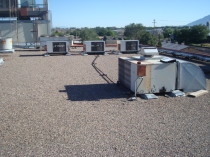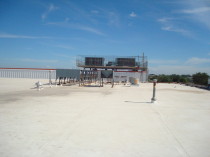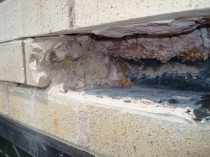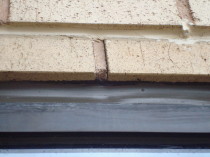Our Services
We believe that companies that concentrate their work in certain areas can provide truly exceptional work. Since we would never offer our customers anything less, we specialize in the following core disciplines:
Roofing
For decades, the industry standard for longevity in low slope roofs was a maximum of 20 years. Building owners, manufacturers and contractors would plan on and budget for replacement within the 20 years. This approach to asset management is inefficient and costly. We believe that with good design, improved drainage, time tested materials, quality control during construction and routine maintenance during the life of the roof system, the 20 year standard should be considered a minimum.
Our approach to achieving this longevity combines the above elements along with increasing the r-value of the roof system. This combination will provide the Owner with an asset that will prove to be low maintenance and also exceed performance expections. The slight increase in square foot price in the initial investment will be realized several fold in savings over the life of the system. The enhanced design and construction will significantly decrease the maintenance and repairs required for standard roof system. The increased r-value will reduce initial energy costs and anticipates future increases in the price of energy. And lastly, because the system will exceed the standard 20 year life cycle, the cost of reroofing after 20 years is eliminated.
After design and construction, a new white thermoplastic membrane installed. R-value was increased by 50% resulting in an immediate energy savings. Payback on the additional insulation is estimated at 15 months. All obsolete units and penetrations removed. New vapor seals installed at perimeter eliminating ice and condensation occurrances on the interior walls and a new standing seam sheet metal panel system installed over a fully sealed insulated exterior wall.
Other Roofing Services
Survey and Evaulation
Infrared Surveys
Consultation
Leak Investigation
Design Documents
Insurance Claims
Plan Review
Failure Investigations
Construction Administation
Construction Observation
On-site and Laboratory Testing
Walls
The first thing the public sees when visiting your facility is the building exterior. The architects job is to make the exterior aesthetically appealing. This is generally accomplished with bricks and mortar, metal curtain walls, glass etc. These are all very sturdy materials; however, they are not impervious to the ravages of the weather and often times rely on elastomeric sealants as weatherproofing at critical joints. UV rays, exteme cold, heat, rain, ice, freeze/thaw cycles all can have a negative affect on these materials. Because these materials are so sturdy, they often times get very little attention and are neglected until problems arise.
Although these materials can withstand severe punishment, they shouldn't be ignored. Often times these materials can allow water to enter the wall cavities and it won't manifest as leakage to the interior for some time after. The result can be degradation of hidden building materials and mold growth.
The most successful method of reducing the risk of these problems is to address them before they become a problem. Our approach is to manage these assets by performing annual surveys to note any deficiencies in their early stages and making less expensive minor repairs and performing prevenative maintenance.
If a wall system has degraded past the point of preventive maintenance or minor repairs, we offer the same services and approach to wall rehabilitation as in our roofing discipline. We have the experience to diagnose most wall problems and to design a cost effective repair for the problem.
CASE STUDY
Cassidy Turley, property managers for Barnes-Jewish Corp. in St. Louis received numerous complaints of persistent leakage at many of the windows at a Medical Office Building. As result of this leakage, isolated areas of mold were also uncovered. They received proposals from several contractors to perform various repairs, most of which would address only one of the causes of the problem. They contacted us to perform a survey and as a part of that survey, we also conducted a water test to further identify and isolate the problem.
We performed further due diligence and removed several courses of brick in representative areas. We observed that the through-wall flashing from the original construction did not extend past the exterior of the brick but, terminated at the core of the brick. Moisture penetrating through the brick was being channeled to the cores of the brick and to the interior through the window frames. We also observed that the glazing at the windows was deteriorated as was the sealant at the wall control and expansion joints and at the window frame to brick joints. The original brick sealer had also severely degraded.
The Owner had earlier received a proposal to replace the existing through-wall flashing with new system. The price of this repair was $365,000. Although this would have addressed the problem at the through-wall flashing, it would not have repaired the other problems and leakage would have likely continued in other areas.
The Owner was looking for a less expensive remedy for the exterior repairs. We recommended a series of repairs to address all items listed above. They included removing the first course of brick above the windows and installing an extension to the existing through-wall flashing. Reglazing the windows at two exposures, replacing the sealant at the various wall joints and resealing the brick. After four years, no leakage has been reported. The cost of these repairs was $73,000.
Colliers Turley reconized that they were receiving differing opinions for the causes and solutions to the leakage at this facility. Rather than choosing a low bidder or relying on a contractor to diagnose the problem, they made the better investment that will contribute to the longevity of the building. We were happy we could be a part of the solution.





